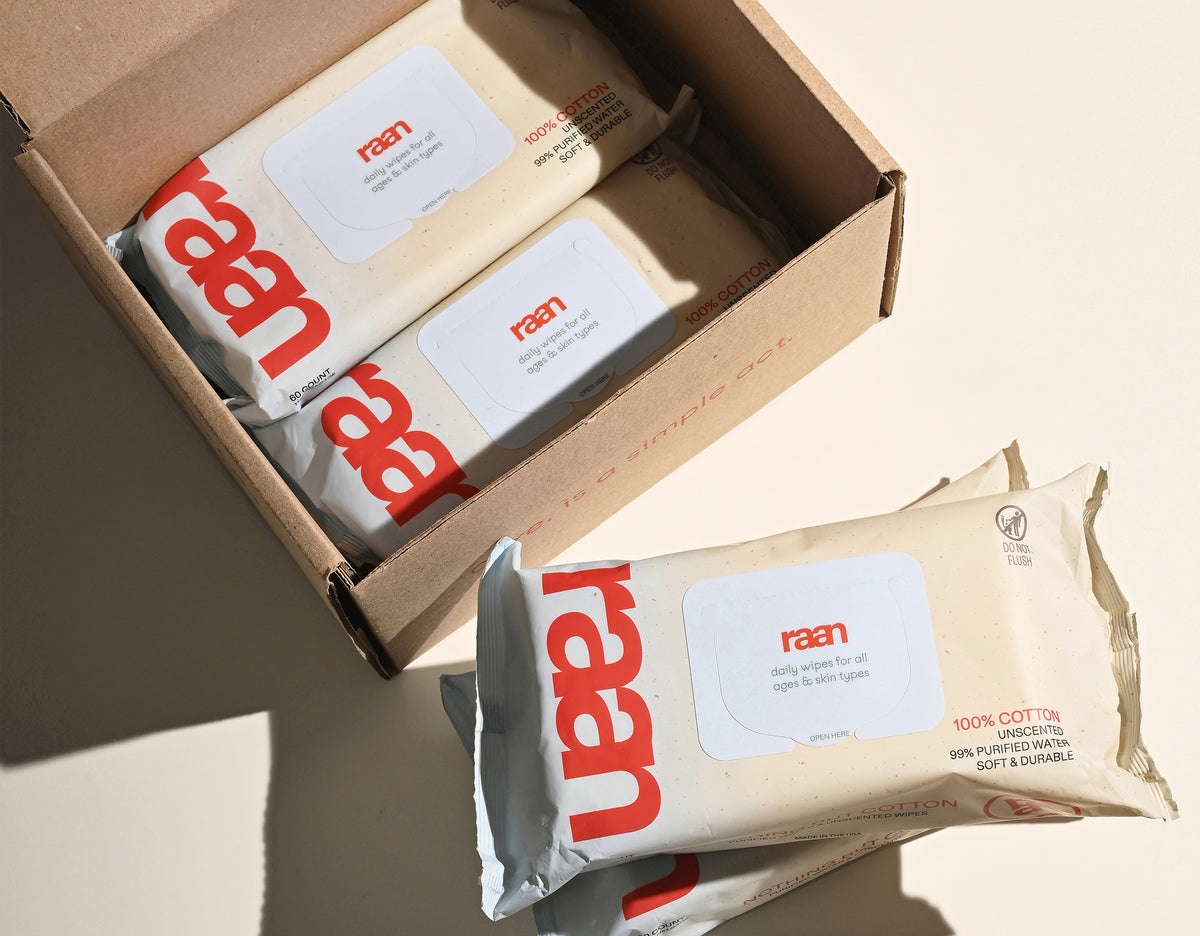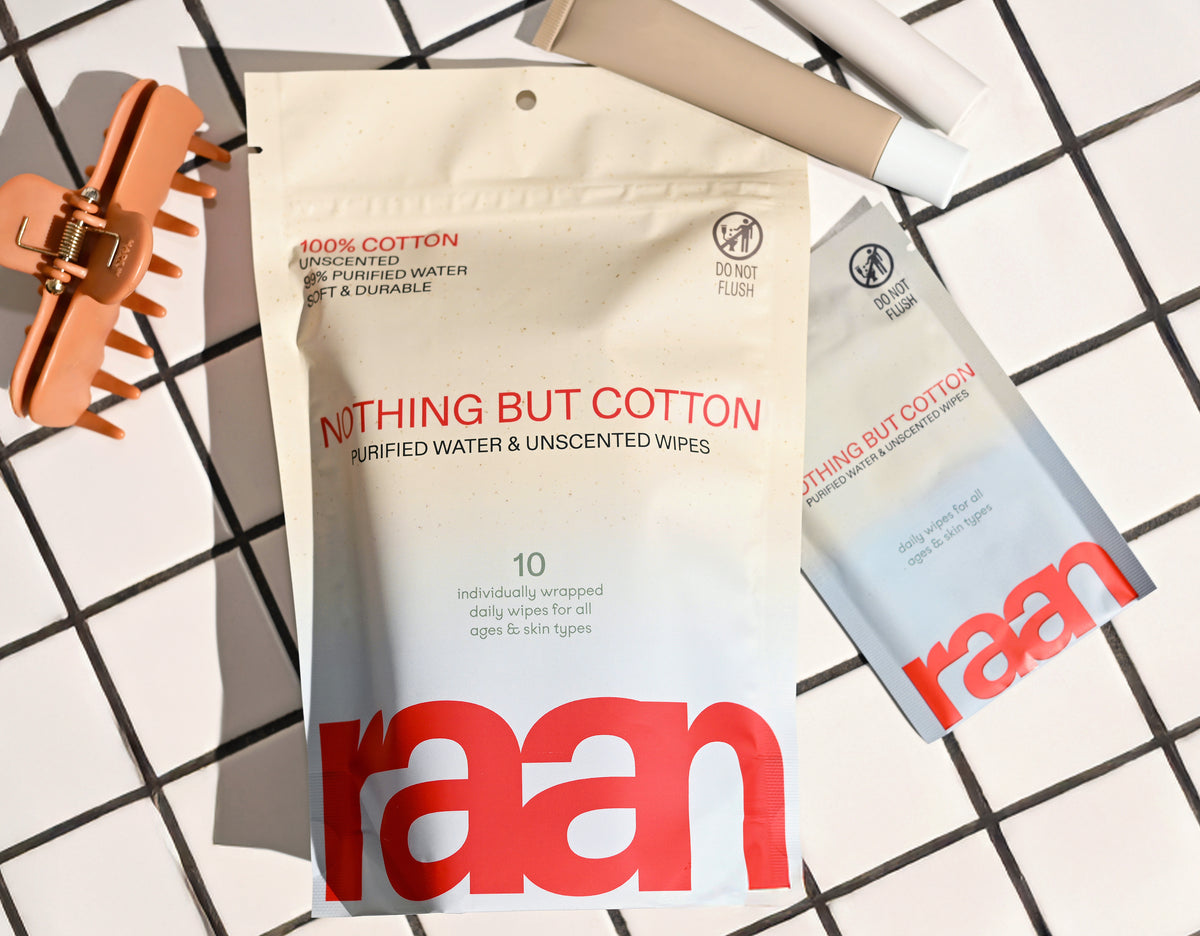Quick Answer
Most wipes last 2-3 years unopened when stored properly in a cool, dry place. Once opened, use within 1-3 months for best quality. Check for dryness, mold, or unusual odors before use - these are signs your wipes have gone bad.
Key Takeaways
- Most wipes last 2-3 years unopened when stored properly in a cool, dry place.
- Once opened, wipes should be used within 1-3 months for best quality.
- Check wipes for dryness, mold, or unusual odors before use.
- Signs of dryness, mold, or unusual odors indicate that wipes have gone bad.
Table of Contents
- What Are Wipes Really Made Of?
- Do Wipes Actually Expire or Just Lose Effectiveness?
- The Hidden Problems with Conventional Wipes
- What Actually Determines How Long Wipes Last?
- How to Tell When Wipes Have Gone Bad
- Storage Best Practices That Actually Work
- Environmental and Safety Considerations
- Expert Storage Strategies and Best Practices
- Making Informed Choices About Wipe Storage and Safety
You're standing in your pantry, staring at a pack of wipes you bought months ago, wondering: are these still good? Whether you're a new parent stocking up on essentials or someone who keeps wipes handy for life's everyday messes, understanding shelf life matters more than you might think.
Here's what most people don't realize: not all wipes are created equal. The ingredients, packaging, and manufacturing process dramatically affect how long they stay fresh and safe to use. While conventional wipes might seem like a simple purchase, the reality is that many contain synthetic preservatives, plastic fibers, and mystery ingredients that can break down unpredictably over time.
We're going to walk you through everything you need to know about wipe longevity - from decoding those confusing expiration dates to spotting the red flags that mean it's time to toss that pack. You'll also discover why the type of wipe you choose makes all the difference in both shelf life and safety.
What Are Wipes Really Made Of?
Before we dive into expiration dates, let's talk about what's actually in those wipes. Most conventional wipes contain a complex mix of water, cleansing agents, synthetic preservatives, moisturizers, and various additives. The problem? Many brands use plastic-based materials and lengthy ingredient lists filled with compounds you can't pronounce.
The material matters just as much as the formula. Traditional wipes are often made from synthetic fibers or plastic blends that don't break down naturally - and this affects both their shelf life and what happens when they eventually expire.
The Raan Difference: Our wipes are made from unbleached, 100% cotton with just five EWG-verified ingredients: purified water, two food-grade preservatives (sodium benzoate and potassium sorbate), skin-conditioning ethylhexylglycerin, organic aloe, and citric acid for pH balance. No plastic fibers, no mystery chemicals - just what you need and nothing you don't.
This simplicity isn't just about being "clean" - it's about predictability. When you know exactly what's in your wipes, you can better understand how they'll behave over time and what to watch for as they age.
Do Wipes Actually Expire or Just Lose Effectiveness?

Here's where it gets interesting: not all wipes have clear expiration dates, and there's a difference between "expired" and "no longer effective." Some brands stamp expiration dates on their packaging, while others use "best by" dates or manufacturing codes that require detective work to decode.
The truth is, wipes don't spoil like milk. Instead, they gradually lose moisture, effectiveness, and safety over time. The preservatives that keep them fresh have a limited lifespan, and once they break down, you're looking at potential bacterial growth, mold, or simply wipes that no longer do their job.
- Water content: The primary ingredient in most wipes, water can evaporate or become contaminated over time.
- Preservative breakdown: Synthetic preservatives lose potency, while food-grade options like ours provide more predictable protection.
- Material degradation: Plastic fibers can break down and release particles, while natural cotton maintains its integrity longer.
- Packaging integrity: Seals weaken over time, allowing air and contaminants to enter.
This is why we're transparent about our ingredients and use food-grade preservatives - the same ones that keep your food safe. You deserve to know not just what's in your wipes, but how those ingredients behave over time.
The Hidden Problems with Conventional Wipes
Most people assume all wipes are basically the same, but the billion-dollar wipes industry has some dirty secrets. Conventional wipes often contain plastic fibers that can shed microplastics, synthetic preservatives that break down unpredictably, and fragrances that can cause irritation - especially as the product ages.
When these wipes sit on shelves or in your home for months, those synthetic materials and mystery ingredients don't just lose effectiveness - they can actually become problematic. Plastic fibers become brittle, synthetic preservatives create byproducts, and fragrances can turn rancid.
What This Means for You: Every time you use an old conventional wipe, you're potentially exposing yourself or your family to degraded materials and compromised ingredients. This is especially concerning for sensitive skin, newborns, or anyone dealing with conditions like eczema.
We created Raan because we believe you shouldn't have to guess what's in your everyday essentials or worry about how they'll change over time. Our unbleached, 100% cotton material stays consistent, and our minimal ingredient list means fewer variables to worry about as the product ages.
What Actually Determines How Long Wipes Last?

The shelf life of your wipes isn't just about the expiration date printed on the package. Several key factors work together to determine whether your wipes will stay fresh and effective or turn into a dried-out, potentially contaminated mess.
Ingredient Composition Makes All the Difference
Water content is the foundation of any wipe, but it's the preservative system that really determines longevity. Synthetic preservatives like parabens and formaldehyde-releasing agents might sound intimidating, but they're actually designed to last longer on shelves. The trade-off? They can break down into concerning byproducts over time.
Food-grade preservatives like sodium benzoate and potassium sorbate - the same ones we use in Raan wipes - provide reliable protection with more predictable behavior. They're gentler on skin and don't create the same concerning breakdown products as their synthetic counterparts.
Material Matters: Plastic-based wipe materials can become brittle and shed microplastics as they age, while natural cotton maintains its integrity throughout its shelf life. This is why our unbleached, 100% cotton wipes stay consistent from first use to last.
Packaging and Storage: The Unsung Heroes
Even the best-formulated wipes can fail if the packaging doesn't protect them properly. Hard plastic lids create better seals than adhesive strips, but they also use significantly more plastic. Our pouches use 70% less plastic than standard wipes while still maintaining an effective barrier against air and contaminants.
- Temperature stability: Heat accelerates preservative breakdown and water evaporation.
- Humidity control: Too much moisture can encourage bacterial growth; too little causes drying.
- Light exposure: UV rays can degrade both the material and active ingredients.
- Air exposure: Oxygen contact starts the degradation process immediately.
The best storage approach? Keep unopened wipes in a cool, dry place away from direct sunlight. Once opened, reseal tightly after each use and store upside down to help maintain moisture distribution.
How to Tell When Wipes Have Gone Bad
Knowing the warning signs can save you from using compromised wipes on your skin or your family's. Unlike food spoilage, wipe degradation can be subtle at first, but there are clear indicators that it's time to toss that pack.
Safe to Use Signs
- Wipes feel appropriately moist and flexible
- No unusual odors or chemical smells
- Material integrity intact - no tearing or breakdown
- Clear, consistent liquid with no discoloration
Time to Discard Signs
- Dryness or crispy texture
- Mold growth or dark spots
- Foul, rancid, or chemical odors
- Wipes tear easily or fall apart
- Skin irritation after use
Here's what most people don't realize: expired wipes aren't just ineffective - they can actually become problematic. When preservatives break down, harmful bacteria can multiply. When plastic fibers degrade, they can cause micro-abrasions on sensitive skin. When fragrances turn rancid, they can trigger allergic reactions.
Trust Your Instincts: If something seems off about your wipes - whether it's texture, smell, or how they feel on your skin - don't risk it. This is especially important for newborns, people with sensitive skin, or anyone dealing with compromised skin barriers.
Storage Best Practices That Actually Work

Proper storage can extend your wipes' usable life significantly, but it's not just about keeping them in a cool place. The way you handle and store wipes affects everything from moisture retention to contamination risk.
Unopened Wipe Storage
Before you even open that first pack, storage decisions matter. Keep unopened wipes in their original packaging, away from temperature extremes. A pantry or linen closet works better than a bathroom cabinet, where humidity fluctuates with every shower.
For bulk buyers, practice proper inventory rotation - use older packs first and keep newer ones in reserve. Store packs flat rather than stacked vertically to prevent the liquid from pooling at one end.
Once Opened: The Critical First Month
The moment you break that seal, the countdown begins. Air exposure starts the degradation process, so your storage habits become crucial. Always reseal immediately after use - even a few minutes of air exposure can begin the drying process.
Store opened packs upside down occasionally to redistribute moisture, and keep them away from heat sources like radiators, sunny windows, or car interiors. If you're using wipes daily, you'll typically finish a pack within the optimal 1-3 month window.
The One-Pack Rule: Only keep one pack open at a time. Having multiple opened packs increases waste and the likelihood of using compromised wipes. This simple habit can dramatically improve your wipe experience and safety.
Remember, these storage principles matter more with some wipes than others. Our simple, stable formula and natural cotton material are more forgiving than conventional alternatives, but proper storage still extends their effectiveness and ensures the best experience every time you reach for one.
Environmental and Safety Considerations
Using expired wipes isn't just about effectiveness - it's about safety and environmental responsibility. When wipes break down, they can pose health risks, especially for sensitive skin. And when we discard expired products, we're contributing to unnecessary waste that could have been prevented with better storage and planning.
Health Risks of Using Expired Wipes
Expired wipes can harbor harmful bacteria once their preservative systems fail. For newborns and people with compromised skin barriers, this can lead to infections, rashes, or allergic reactions. Even more concerning, degraded plastic fibers in conventional wipes can cause micro-abrasions that make skin more vulnerable to irritation.
This is why we formulated Raan wipes with food-grade preservatives and unbleached, 100% cotton material. Even as they age, they don't break down into harmful components or shed microplastics onto your skin.
Sensitive Skin Alert: If you or your family members have eczema, dermatitis, or other skin conditions, using fresh wipes becomes even more critical. Expired preservatives can trigger flare-ups that fresh products wouldn't cause.
Reducing Waste Through Smart Storage
Every pack of wipes that expires before use represents wasted resources - from the water and materials used in production to the packaging that ends up in landfills. Proper storage and inventory management can significantly reduce this waste.
When you do need to dispose of expired wipes, remember that most conventional wipes contain plastic and won't biodegrade. Our cotton wipes are biodegradable, but they still shouldn't be flushed - they belong in compost or regular waste where they'll break down naturally.
Eco-Friendly Disposal
- Compost natural cotton wipes if your system accepts them
- Regular trash for wipes with food-grade preservatives
- Recycle cardboard packaging separately
- Reuse pouches for travel or storage
Avoid These Mistakes
- Never flush any wipes, even biodegradable ones
- Don't put plastic-fiber wipes in compost
- Avoid throwing away entire unopened packs without checking
- Don't ignore local recycling guidelines
For more on the environmental impact and shelf life of wipes, you can also review this authoritative resource on shelf life of healthcare products.
Expert Storage Strategies and Best Practices
After years of testing different storage methods and hearing from customers about what works in real life, we've identified the strategies that consistently extend wipe shelf life while maintaining safety and effectiveness.
Smart Inventory Management
The key to minimizing waste is treating your wipe supply like a small inventory system. Buy only what you'll use within the optimal timeframe, rotate stock properly, and track what you have on hand. For families using wipes daily, a 2-3 month supply is typically optimal.
Keep a simple log of purchase dates, especially for bulk purchases. This helps you use older packs first and gives you a realistic sense of your usage patterns. Many families overestimate how quickly they go through wipes, leading to expired products.
Climate-Specific Storage Tips
Your local climate affects how you should store wipes. In humid environments, focus on preventing mold growth by ensuring good air circulation around stored packs and checking them more frequently. In dry climates, prioritize preventing moisture loss by keeping packs in slightly more humid areas like linen closets rather than heated rooms.
For travel or temporary storage, small airtight containers can provide extra protection, especially in extreme temperatures. Just remember that transferring wipes to different containers increases contamination risk, so only do this when necessary.
The 30-Day Check: Set a monthly reminder to inspect your wipe supply. Check for any signs of damage to packaging, unusual odors, or packs approaching their expiration dates. This simple habit prevents surprises and ensures you're always using fresh, effective wipes.
For more expert tips and a deeper dive into how long wipes last unopened, check out our in-depth guide.
Making Informed Choices About Wipe Storage and Safety
Understanding how long wipes last unopened - typically 2-3 years when stored properly - is just the beginning. The real value comes from knowing how to store them correctly, recognize when they've gone bad, and make choices that prioritize both safety and sustainability.
The difference between a wipe that maintains its effectiveness throughout its shelf life and one that becomes problematic often comes down to formulation and materials. Simple, stable ingredients like those in our EWG-verified formula, combined with natural cotton material, create products that age gracefully rather than breaking down into concerning components.
Whether you're a new parent stocking up for the first time or someone looking to make more informed choices about everyday products, remember that the cheapest option isn't always the most economical if it expires before you can use it safely. Invest in quality products with transparent ingredients, store them properly, and trust your instincts about when something doesn't seem right.
Your skin - and your family's - deserves products that maintain their safety and effectiveness from first use to last. By following proper storage practices and choosing wipes made with integrity, you can ensure that every wipe you use meets the standards you expect, no matter how long it's been sitting in your cabinet.
Curious how many wipes you actually need? Learn more about how many wipes to keep on hand for your family.
For further reading on shelf life and best practices, see this external guide to shelf life of consumables.
Frequently Asked Questions
Do baby wipes expire if not opened?
Yes, baby wipes can expire even if unopened. Over time, the moisture inside the package can evaporate or the preservative system can weaken, reducing their effectiveness and potentially causing the wipes to dry out or develop an off smell.
How long do water wipes last unopened?
Water wipes typically last about 12 to 18 months unopened, depending on the packaging and storage conditions. Keeping them in a cool, dry place away from direct sunlight helps maintain their quality until the expiration date printed on the pack.
How long do cleansing wipes last unopened?
Cleansing wipes usually have a shelf life of 12 to 24 months unopened. Their preservative system and packaging are designed to keep the formula stable, but exposure to heat or air can shorten their usable life.
Can wipes go out of date?
Yes, wipes can go out of date. Over time, preservatives break down, moisture decreases, and the wipe’s texture or scent may change, making them less effective or pleasant to use. It's best to check the expiration date and package condition before use.
What is the shelf life of wipes?
The shelf life of wipes generally ranges from 12 to 24 months unopened, depending on the type and formulation. Proper storage—cool, dry, and sealed—helps preserve their quality throughout this period.
Do unopened disinfectant wipes expire?
Unopened disinfectant wipes do expire. The active ingredients and preservatives lose potency over time, which can reduce their effectiveness in killing germs. Always check the expiration date and use them before that date for reliable performance.






